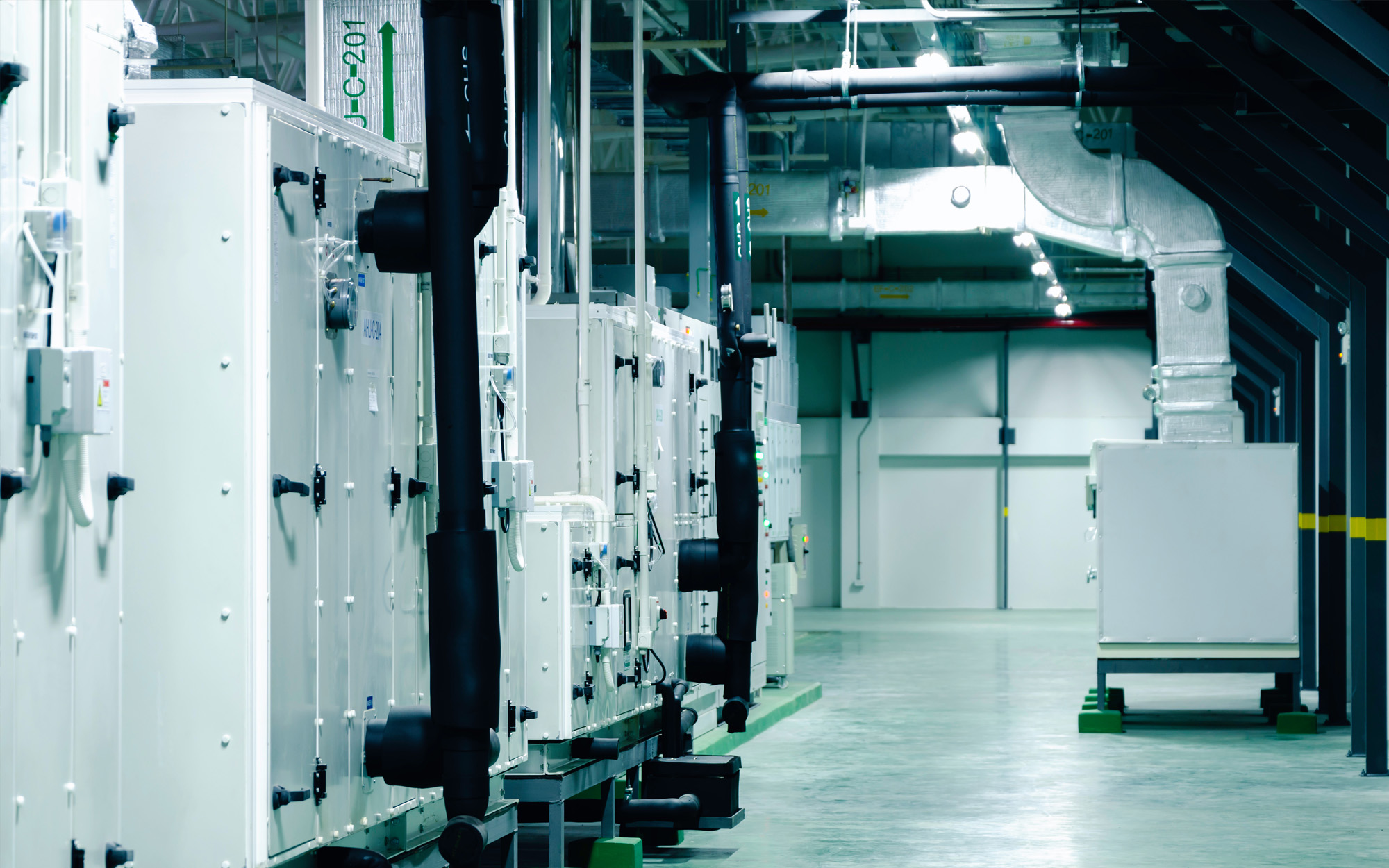For lots of industries, cleanrooms are essential for providing a safe and sterile environment for sensitive operations. But without a well-designed HVAC system for a cleanroom environment, a business could fail to meet compliance standards.
Keep reading to learn more about cleanroom design regulations you should know, common mistakes industry professionals make, and why companies like AirLogix are the perfect choice for installing and maintaining your HVAC equipment.
The Components of Cleanroom Design
Cleanrooms are controlled environments that maintain low levels of airborne particles and pollutants. These isolated areas can regulate many environmental factors, from air pressure to temperature, humidity, and more. From the pharmaceutical and medical industries to food service and cannabis growth, precise cleanroom design is extremely important—even the smallest calculations could have a huge impact on a facility.
Typically, cleanrooms involve a complex system of High-Efficiency Particulate Air (HEPA) filters, ventilation systems, temperature control systems, air showers, and other air-management devices. And when thinking about HVAC engineering, many elements can influence how much airflow the cleanroom needs, like:
- The cleanroom’s layout, size, and type
- The number of people working in the room
- The outside temperature and humidity
- The equipment in the room
- The difference in pressure
- The cleanroom’s ISO certification (more on that later)
Common Cleanroom Design Mistakes
As you understand more of the components and overall best practices of cleanroom design, you should recognize common mistakes industry leaders make, like:
- Neglecting Their Air Conditioning – Cleanrooms don’t produce heat on their own, and any room without a dedicated AC system can make for an uncomfortable situation.
- Having a Poorly Designed Layout – Proper layout is everything to an effective cleanroom system, and things like a room that’s too small, no large doors or windows, and a layout that can cause a bottleneck workflow are not ideal.
- Lack of Transport Planning – Materials need to be brought into cleanrooms, but not every cleanroom can be entered the same way. Contamination is a huge possibility, and a lack of planning for how items will be transported can contribute to things like the gown room being relegated to a material transfer area.
- Wrong Airflow Pattern – One of the most common mistakes made during construction is failing to consider airflow patterns. This leads to an overuse of energy and differing air pressures.
- Ignoring Compliance Regulations – Compliance is everything, and this even goes down to the raw materials, equipment, and manufacturing process used. Something as simple as a filter that can’t trap all the air particles is essential.
Want to learn more about pharmacy cleanroom HVAC and similar topics? See how AirLogix supports medical and life sciences.
Understanding ISO Specifics
ISO cleanroom standards refer to the regulations set by the International Standards Organization to measure the number of air particles in a room. The ISO 14644-1 model is the primary authority in the U.S. and Canada. It includes the ISO classes one through nine, with one being the most pristine standard and nine being the closest to the average room (though the cleanliness levels are still much higher). Since most industries aren’t shooting to have their cleanroom meet ISO 9 requirements, we’ll focus on the first eight.
ISO 8 Zone
As the second most common ISO cleanroom class, these rooms can be entered without an airlock and require 15 to 25 air changes per hour. Typically, these don’t feature unidirectional airflow.
ISO 7 Zone
Probably the most common class of cleanrooms, ISO 7 zones need 30 to 60 air changes per hour and anterooms need 15 to 25. People who need this type of cleanroom are advised to have an ISO 8 airlock or gowning room before entering the ISO 7 room due to the huge air changes. Like the ISO 8 zone, this also has a non-unidirectional airflow.
ISO 6 Zone
Depending on the room’s size, number of equipment, and other factors, an ISO 6 cleanroom can be reached with one to two airlocks and has 90 to 180 air changes per hour. Occasionally, unidirectional airflow is used as a cheaper alternative to installing air returns on the floor.
ISO 5 Zone
Reaching ISO 5 zone is pretty similar to ISO 6, but it takes two to three airlocks instead. This zone also uses a unidirectional airflow that ensures the highest efficiency and keeps contamination from the cleanroom. This zone sees 240 to 360 air changes per hour.
ISO 4 Zone
This ISO standard requires 400 to 750 changes per hour, allowing less than two particles greater than 5.0 microns per cubic meter. This zone also uses 100% Ultra-Low Particulate Air (ULPA) filters.
ISO 3 Zone
An ISO 3 cleanroom has around 500 to 750 air changes per hour, uses ULPA filtration, and requires less than 102 particles greater than .3 microns and no more than eight particles greater than 1.0 microns per cubic meter.
ISO 2 Zone
The second-most pristine cleanroom classification, these rooms also have around 500 to 750 air changes per hour and use ULPA filtration. ISO 2 specifications mandate less than 11 particles greater than .3 microns and for none to surpass 1.0 microns per cubic meter.
ISO 1 Zone
The ultimate cleanest standard, class one classrooms allow no particles greater than 0.3 microns and have 500 to 750 air changes per hour. These also use ULPA filters with ceiling coverage and raised floors.
Key Takeaway
Keeping industry regulations in mind as you consider cleanroom HVAC design may seem tough, but with a great starting point on best practices, you can stay compliant and succeed in your industry.
Secure Quality HVAC for Cleanrooms With AirLogix
If you’re looking for the perfect company to install and maintain your HVAC equipment to meet ISO standards, look no further than AirLogix. We have the expertise to help you save precious time and money while keeping your operations intact.
For further questions about what a team like AirLogix can do for your cleanroom, contact us today

Bethany Elfaham spearheads AirLogix, a company distinguished for its advanced commercial HVAC/R services. Bethany’s leadership and expertise in mechanical systems have propelled AirLogix to the forefront of HVAC innovations, offering energy-efficient and reliable solutions to businesses. Her focus on sustainable practices and customer-centric service ensures that AirLogix remains a leader in enhancing indoor air quality and operational efficiency for its clients.
